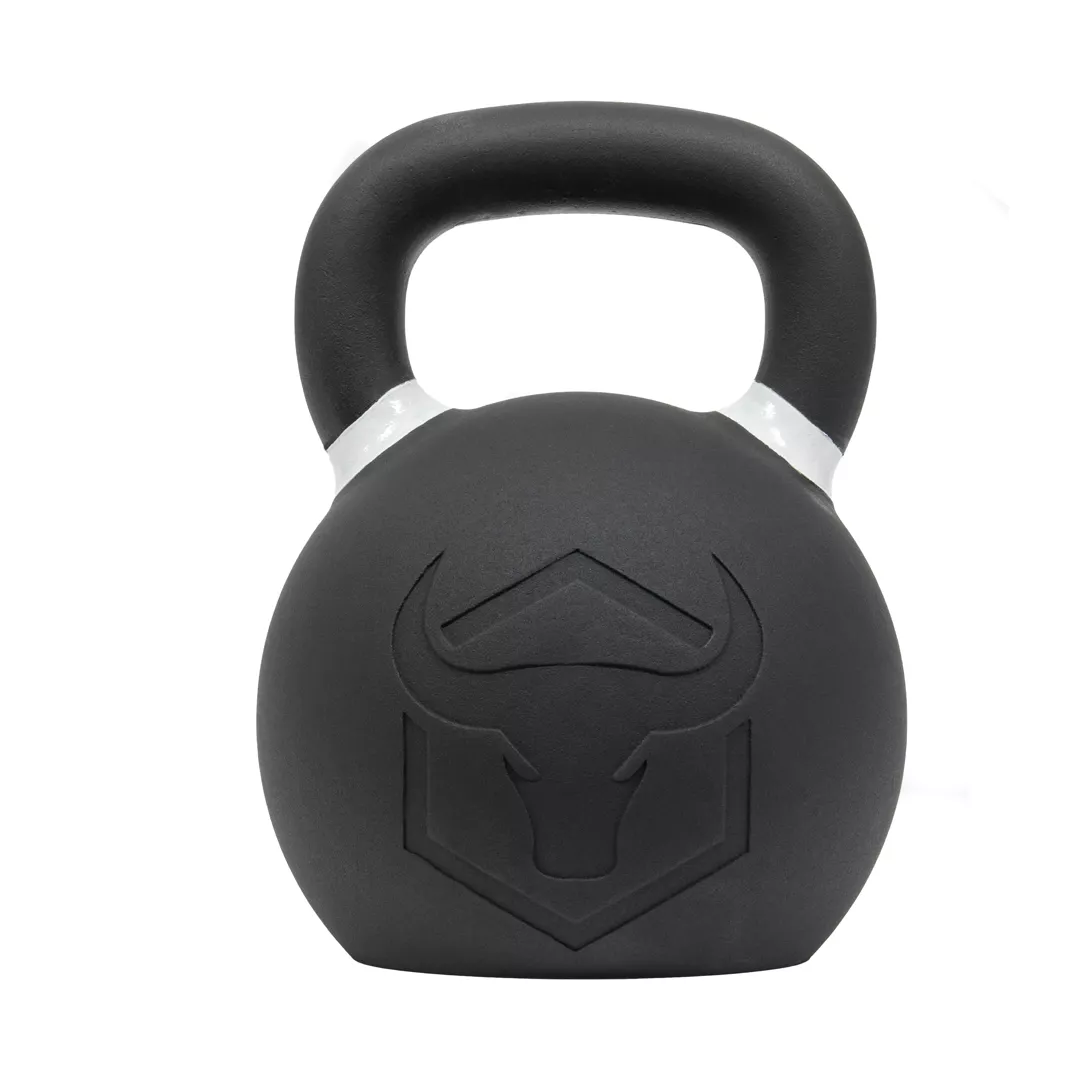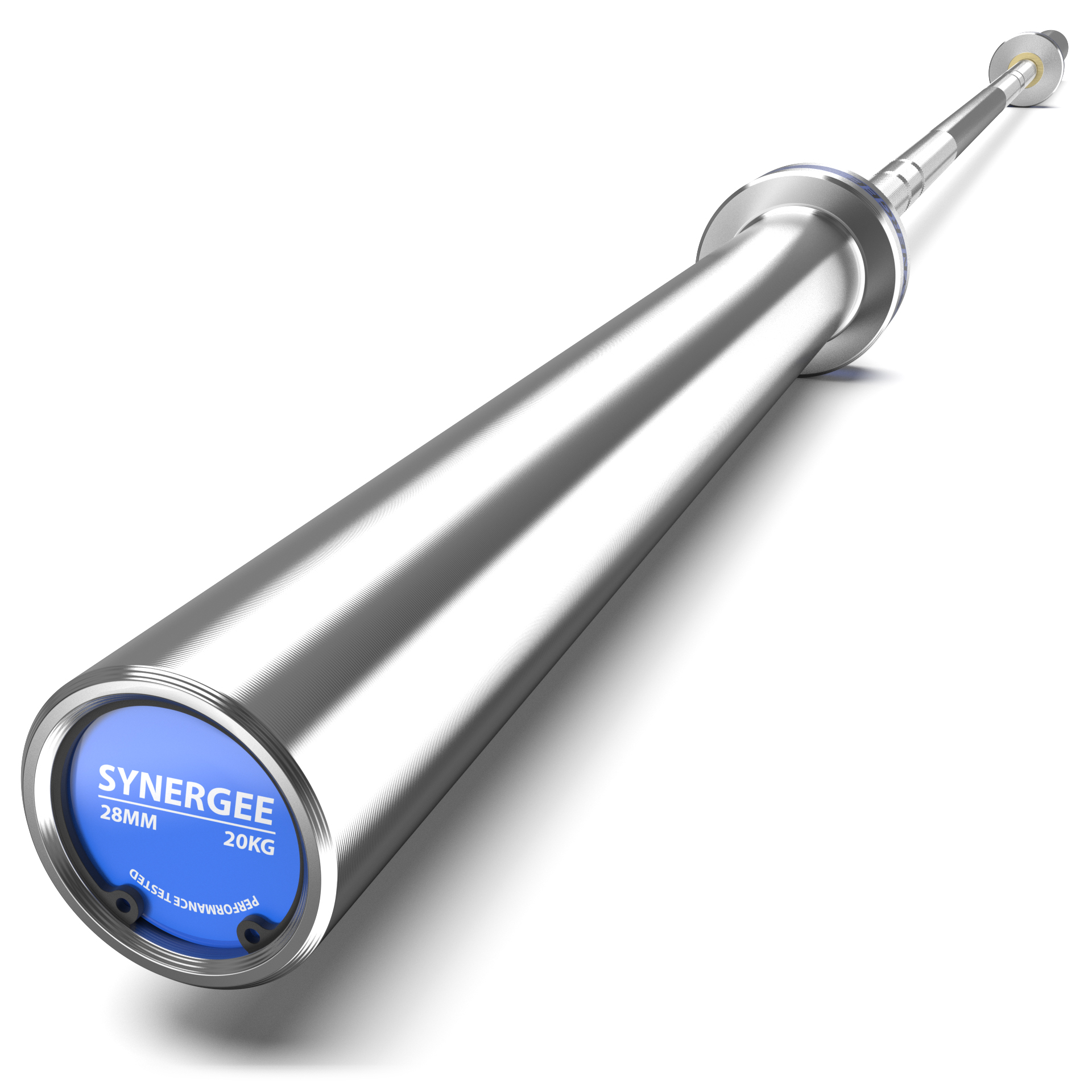The Importance of Strength Training for Runners
Strength training for runners is an essential skill for improving performance and to prevent injuries. Lifting weights can help build stronger legs, a more dynamic core, and other major muscle groups, along with improving speed and endurance.
Running alone does not lead to significant gains in strength. Weight training is needed to improve running economy and cardiovascular efficiency, which are both critical for achieving better aerobic fitness in runners. Consistency is key, and even a few strength training sessions a week can make a significant difference during your performance efforts.
- The Importance of Strength Training for Runners
- Benefits of a Strength Training Routine
- Creating a Strength Training Routine
- Essential Strength Exercises for Runners
- Debunking Common Myths About Runners Lifting Heavy
- Equipment Essentials for Runner’s Weight Training
- Iron Bull Rubber Hex Dumbbells
- Iron Bull Powder Coated Kettlebells
- Gymreapers Pull up Resistance Bands
- Synergee Regional Barbell
- Periodization and Progressive Overload
- Common Weightlifting Mistakes to Avoid
- Fitting Strength Training into a Busy Schedule
- Measuring Progress and Adjusting Your Routine
- Conclusion
- FAQ's
- References
Benefits of a Strength Training Routine
Strength training routines designed specifically for runners will likely target the power and muscle endurance of the lower extremities. The benefits of this type of training combined with your typical training will give you an edge amongst your competition by improving your muscle efficiency, speed, and by lowering your risk of injury.
Creating a Strength Training Routine
As a runner, sticking to a routine for strength training is important for progressive results. If you work hard and stay consistent you will see incremental progress each week in technique, strength, and most importantly, your running performance.
Before training, identify what specific style of running you will be performing. Although strength training is important for all types of runners, the training modalities will be very specific to the goals you have in place.

Start with a balanced strength training routine that includes two or three sessions a week. As you get stronger over the course of your program, you can add an extra day to your training, along with a slight switch up to volume, frequency and intensity. Its best to make your training plans between 8 and 12 weeks at a time to dial in on the skills you are learning.
Focus on major muscle groups through the lower body and upper body to gain the most from your training. Seeking guidance when beginning a strength training routine is crucial for runners who are looking to seriously progress their results.
Before training, identify what specific style of running you will be performing. Although strength training is important for all types of runners, the training modalities will be very specific to the goals you have in place.
Principles To Consider When Starting A Strength Training Program
Use the Rate of Perceived Exertion (RPE) scale to gauge the intensity of any exercise you are performing. This is a subjective measure, where you the individual, decide how intense an exercise feels at the time of performance.
Record this number to help decide whether it is time to increase the weight and intensity, or if it is time to back off on weight and work on technique.
Either way, this is a great measurement tool to use to see the progress you have made from the beginning to the end of any training block.
Assign a score for each activity to track progression over time, this tally will provide much feedback weeks down the line on how much you progressed. Always focus on technique over weight, as you get stronger the weight you will lift becomes heavier.
Before lifting heavy weights start with less complicated exercises or go through partial motions if proper form is not maintained. Once you can perform a reasonable amount of weight with good form, slowly increase the weight by 5-10lbs bi-weekly.
Crafting a Weekly Schedule That Works
The best balance for most runners may look like three days of running, with two days of strength training, and two days of active recovery.
Creating a balanced weekly schedule is vital to maximize the benefits of running and strength training by allowing your body to properly recuperate after an effort. Aim to do at least two strength workouts a week, spaced out so they don’t conflict with your tougher running sessions.
Essential Strength Exercises for Runners
Below are 7 essential movements that every runner, from endurance athletes to sprinter, should aim to have in their training sessions to enhance running efficiency, power, and overall performance
Lower Body Workouts For Runners
Lower body exercises are the foundation for any good running program, meaning you need one of these movements every time you train.
Box Squats
Lower body movements like the Box Squat are a great exercise to increase strength in the posterior chain. You can load up your Barbell heavier as you progress compared to a full depth squat, and add an explosive emphasis as you rise.
Tibialis Anterior Raises
Performing Tib Bar Raises are a great way to decrease the pains of shin splints. The anterior portion of our calf muscles are often overlooked when training. Incorporate these movements into your routine to develop better ankle and knee stability.
Single Leg RDL
When performing the Single RDL with Dumbbells, it is crucial to maintain proper form by ensuring that your knee is slightly bent and aligned with your toes to prevent injury and maximize effectiveness. Keep the core tight and load the weight opposite of the working leg.
Upper Body Conditioning
Having stronger muscles in the upper body improves running efficiency, meaning runners expend less energy over time.
Weighted Pull-ups
Weighted Pullups are a top tier movement for runners to develop massive upper body gains. Using a weight belt for pullups is a great bodyweight training method to include in any regimen
Weighted Push-ups
Similar to weighted pull ups, weighted pushups are a great calisthenic movement to incorporate to your upper body push routine. Most races begin off the blocks, getting comfortable in the bottom position with weighted resistance will improve your explosive strength.
Core Strength: The Engine Room of Running
A strong core enhances stability and improves running form, which contributes to a more efficient stride.
Reverse Squats
Reverse squats help align and strengthen the core and hip flexors and can be particularly beneficial for athletes with anterior pelvic tilt or ribcage flair. Getting some Hip flexor training straps will do the trick.
Kettlebell Hip Flexion
Balancing on one foot during the kettlebell hip flexor raise requires a great amount of stability which can help in strengthening the core muscles, promoting better posture and balance. Use a light kettlebell at a deficit and lift with your working side, making sure to stand tall without over arching the lower back.
Debunking Common Myths About Runners Lifting Heavy
Many runners shy away from lifting heavy weights, fearing it will lead to bulky muscles that could hinder their running performance. However, this is a common myth that has been debunked by numerous studies.
In reality, strength training with heavy weights can significantly enhance running performance by increasing power, speed, and endurance. When you lift heavier weights, you build stronger leg muscles and improve the efficiency of your running form, making each stride more powerful and less taxing.
Another prevalent myth is that runners should only focus on lower body workouts since running primarily engages the legs. While lower body workouts are indeed crucial, neglecting the upper body can be a mistake.
Strengthening the upper body can improve posture, reduce fatigue, and contribute to overall power and endurance. Incorporating upper body exercises into your strength training routine ensures a balanced approach that supports your entire running performance.
Equipment Essentials for Runner’s Weight Training
When it comes to weight training for runners, having the right equipment can make a significant difference. While bodyweight exercises are effective, incorporating weights and other tools can elevate your strength training routine. Here are some essential pieces of equipment for runners:
Dumbbells: Versatile and essential, dumbbells can be used for a variety of exercises, including squats, lunges, and deadlifts. They help in targeting major muscle groups adding free range resistance to your workouts.
Kettlebells: With a unique weight distribution, kettlebells are excellent for dynamic movements like swings, squats, and presses. They enhance strength and stability, crucial for running efficiency.
Resistance Bands: Lightweight and portable, resistance bands are perfect for runners who travel or prefer home workouts. They can be used for exercises like squats, hinges, and isometric holds, providing variable resistance.
Barbell: A barbell is a long, weighted bar ideal for compound exercises like squats, deadlifts, and presses. It allows for progressive overload, essential for building power and strength over time.
Incorporating these tools into your strength training sessions can help you target different muscle groups and add variety to your workouts, ultimately enhancing your running performance.
Periodization and Progressive Overload
To continuously improve your strength training, understanding the concepts of periodization and progressive overload is crucial. Periodization involves varying your strength training routine over time to avoid plateaus and prevent overtraining. This can be achieved by changing the type of exercises, the weight used, or the number of reps and sets.
Progressive overload, on the other hand, is the gradual increase of stress placed on the body during exercise. This can be done by adding weight, increasing the number of reps or sets, or decreasing rest time between exercises. For example, you might start with three sets of 10 reps of squats with 10 pounds.

Over time, you can increase the weight to 15 pounds, then 20 pounds, and so on. You can also increase the number of reps or sets, or reduce the rest time between exercises.
By incorporating periodization and progressive overload into your strength training routine, you can ensure continuous improvement and avoid hitting a plateau. This approach helps in building stronger leg muscles and improving overall running performance.
Common Weightlifting Mistakes to Avoid
It can be easy to go about strength training incorrectly, there are common mistakes to avoid when achieving the best results possible. One frequent mistake is neglecting your rest. Not giving your body enough time to adapt can lead to overtraining, undermining your running and strength training efforts.
Not following a structured nutrition plan catered to your metabolic needs will prove disastrous, making all the training in the gym futile and a waste of time. Remember, you cant out train a bad diet.
Fitting Strength Training into a Busy Schedule
Find a time that you can commit to, whether it’s morning, afternoon, or evening. Runners should strength train to enhance running efficiency and reduce fatigue, which allows for longer distances and more enjoyable experiences.
Don’t worry too much about the best time of day to exercise – just find a schedule that works for you and work on improving from there.
If possible with the right training and nutrition, you can double up by doing a run in the morning and then your strength work straight afterwards or later in the day, just make sure you are not overworking yourself!
Measuring Progress and Adjusting Your Routine
Measuring progress and adjusting your routine is essential for runners who want to maximize the benefits of strength training. Here are some effective ways to track your progress:
Track Your Workouts: Keep a detailed workout log to record your exercises, weights, reps, and sets. This will help you see your progress over time and identify areas for improvement.
Take Progress Photos: Regularly take photos to track changes in your body composition and muscle mass. Visual evidence can be a powerful motivator.
Monitor Your Running Performance: Keep track of your running metrics, such as pace, distance, and overall performance. This will help you understand how your strength training is impacting your running.
Adjusting your routine is also crucial for continued progress. Here are some ways to make adjustments:
Increase Weight or Resistance: Gradually increase the weight or resistance to continue challenging your muscles.
Decrease Rest Time: Shorten the rest time between exercises to increase the intensity of your workouts.
Incorporate New Techniques: Add variety to your workouts with techniques like plyometrics or agility training.
By regularly measuring your progress and making necessary adjustments, you can ensure that your strength training routine remains effective and continues to enhance your running performance.
Conclusion
Runners who want to improve their performance, prevent injuries, and run more efficiently should practice getting stronger in the weight room. Strength training is not just for weightlifters, it’s for everyone.
Becoming stronger makes it easier to maneuver your body over short and long distances. Strength training can help fight fatigue by building faster, more durable muscle fibers. The stronger you are, the faster you can become, so just get out there and get started!
FAQ’s
What strength training is best for runners?
Strength training works best for runners that follow a system of progressive overload during the off season, along with proper maintenance in season. Building up strength and maintaining your new gains during a season will excel you past the competition.
How many times a week should a runner do strength training?
Anywhere from 2 – 3x weekly strength training will work best for runners.
Do runners really need strength training?
Yes, strength training paired with conditioning will provide a boost to your work capacity. Lifting heavy weights and building muscle is key becoming a better runner.
References
Karp, Jason R PhD. Strength Training For Distance Running: A Scientific Perspective. Strength and Conditioning Journal 32(3):p 83-86, June 2010. | DOI: 10.1519/SSC.0b013e3181df195b














